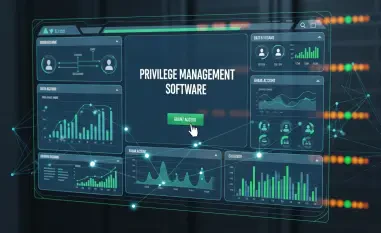In today’s interconnected world, enterprises are grappling with an intensified threat of network backdoors that pose significant risks to organizational infrastructure. These covert entry points are maliciously crafted to allow unauthorized access, enabling attackers to bypass standard authentication protocols, facilitating unauthorized entry while potentially granting attackers the ability to escalate privileges, steal sensitive data, and disrupt operations. The increasing sophistication of backdoor threats in the cyber realm necessitates advanced detection and prevention measures to safeguard organizational assets. This article delves into several methodologies tailored to detect and mitigate these evolving threats while emphasizing the need for proactive prevention strategies in the contemporary cybersecurity landscape.
Understanding Backdoor Threats
Backdoor threats have evolved significantly over recent years, progressing from basic exploits to complex, evasive entities that represent a formidable challenge for cybersecurity professionals. Historically, backdoors were generally uncomplicated with limited capabilities. However, they have now morphed into sophisticated mechanisms designed to elude detection and ensure persistent unauthorized access. These threats exploit weaknesses in an organization’s cyber defenses, allowing criminals to maneuver stealthily within networks. Recent cases have spotlighted the gravity of these threats. For instance, vulnerabilities in platforms like VMware vCenter Server have been exploited to devastating effect, underscoring the urgent need to recognize the evolving nature of backdoors. Understanding their evolution is crucial to crafting effective defense mechanisms.
As backdoors become more intricate, they facilitate clandestine operations, escalating privileges and enabling lateral movement across networks, resulting in potentially substantial data breaches. The covert methods used in these attacks make them difficult to discover until significant damage is already done. Often, backdoors are introduced through seemingly benign software or exploited system vulnerabilities, making their detection a complex task. Recognizing the strategic evolution of backdoor threats will enable enterprises to anticipate potential threats more effectively and deploy adequate countermeasures tailored to the adaptive tactics of cybercriminals. This understanding is pivotal in crafting multifaceted security strategies aimed at both detection and proactive prevention to safeguard valuable organizational data against breaches.
Detection Methodologies
To combat the increasing complexity of backdoor threats, enterprise security teams must employ a variety of detection methodologies designed to identify and neutralize these covert threats effectively. One traditional method is signature-based detection, which focuses on recognizing known malicious patterns within network traffic and system files. Each piece of malware, including backdoors, exhibits unique characteristics—signatures—that are manifested through their behaviors, file properties, and code structure. When traffic aligned with these known signatures is detected, it can be flagged as a potential threat. However, this method has limitations, particularly when confronting zero-day exploits and novel backdoors that have not been previously identified and cataloged.
In contrast, behavior-based detection offers a more sophisticated approach, as it does not rely solely on known signatures. This approach monitors network activity for suspicious patterns that could indicate the presence of a backdoor. By analyzing behavior rather than static signatures, security systems can detect unusual activity suggestive of hidden threats, even those not yet recognized by signature databases. Furthermore, anomaly-based detection expands on this principle by establishing models of normal network behavior and flagging any deviations from these baselines. This method is particularly effective in identifying subtle, novel backdoors that might otherwise blend into legitimate activity. By combining these advanced detection methodologies, enterprises can fortify their defense capabilities against evolving backdoor threats.
Proactive Prevention Strategies
Detection alone is insufficient in the fight against backdoors; enterprises must embrace proactive prevention strategies to minimize the risk of these threats. Among recommended practices is the implementation of jump servers, which play a crucial role in controlling administrative access to critical network devices. By requiring all administrative or root access to occur through a designated jump server, organizations can maintain tighter control over who accesses sensitive areas of their network. This setup ensures any access is logged and monitored, making unauthorized access much more difficult. Deploying multi-factor authentication (MFA) is another critical strategy, particularly for administrative accounts, adding an essential layer of security.
Additionally, network segmentation is a strategic measure that limits device administration access to specific subnets and boxes, thereby reducing potential exposure to vulnerabilities. It effectively compartmentalizes different network sections, ensuring that a breach in one area doesn’t necessarily compromise the entire system. Continuous monitoring with advanced network scanning tools also forms part of a robust prevention strategy. By consistently checking for backdoor vulnerabilities, enterprises can address potential threats before they are exploited. Lastly, deploying Endpoint Detection and Response (EDR) systems helps in continuously assessing end-user devices to detect and mitigate cyber threats early, stopping malicious activities before they can cause harm.
Threat Hunting: A Proactive Defense
In addition to automated detection tools, threat hunting is a proactive defense measure that significantly enhances an organization’s security posture. This strategy involves active searching for cyber threats that might bypass standard detection systems. Threat hunters operate under the assumption that adversaries might already be lurking within the network and undertake comprehensive investigations to uncover suspicious behaviors that signify malicious activity, including backdoor intrusions. This approach relies on the expertise of security professionals to interpret complex data and identify threats that automated systems could miss, often using advanced behavioral analysis and intelligence-driven methods to ferret out concealed threats.
Integrating threat hunting with existing security measures ensures an additional layer of vigilance, helping identify and neutralize threats that might otherwise remain undetected. This proactive approach not only targets potential backdoor threats but also strengthens overall network defenses by continually testing and refining security protocols. By assuming that systems are already compromised, organizations can regularly assess and bolster their defenses, ensuring they remain resilient against increasingly subtle and sophisticated cyber threats. As enterprises navigate the evolving threat landscape, the incorporation of threat hunting represents a critical element of a comprehensive cybersecurity strategy, enhancing resilience against advanced threats.
Embracing a Multi-Layered Security Strategy
Backdoor threats have significantly evolved in recent years, transforming from simple exploits into sophisticated and elusive entities that present major challenges for cybersecurity professionals. Initially, backdoors were straightforward with limited functionalities, but now they have turned into complex systems aiming to avoid detection and maintain unauthorized access. These advanced threats exploit vulnerabilities in an organization’s cyber defenses, allowing cybercriminals to navigate discreetly through networks. Recent incidents have highlighted the serious nature of these threats, such as vulnerabilities in platforms like VMware vCenter Server being exploited with devastating consequences, emphasizing the importance of understanding the changing nature of backdoors. This comprehension is essential for developing effective defense strategies. As backdoors grow more intricate, they enable covert operations, raise access privileges, and facilitate lateral movement across networks, leading to significant potential data breaches. To effectively protect against breaches, organizations must comprehend backdoors’ strategic evolution and deploy robust countermeasures aimed at detection and prevention to secure critical data.













